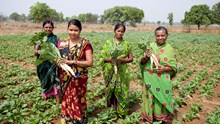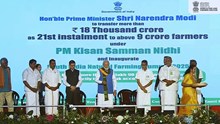
Fish farming is Practiced all over the world under diverse water and climatic conditions. It holds great significance in both warm and cold regions, as it is a source of food, income, and nutritional security for millions of people. In India, mixed fish farming is an age-old practice that still helps improve the economic and social status of rural communities, particularly marginal and small-scale farmers. This practice provides not only protein-rich food but also creates job opportunities.
Fish Species to Choose
Mixed fish farming is the rearing of two or more species of fish, which are compatible and not competitors, simultaneously in a single pond. Multiple species stocked together in a scientific ratio result in maximum utilization of all available food resources in the pond, thereby maximizing production. Species such as Catla, surface feeders, Rohu middle layer feeders, and Mrigal or Calbasu bottom feeders are well suited to this method. These species make use of different layers of the pond and don't compete with one another.
In a traditional combination, Catla, Rohu, and Mrigal are stocked in a ratio of 4:3:3 so as to ensure optimum use of the natural feed that is present in the pond. Through this technique, the various species benefit each other instead of hurting them, which promotes total pond productivity. This mutual system of aquaculture is referred to as mixed fish farming.
Pond Preparation Before Fish Stocking
Proper management of the pond before sowing fish seed in the pond will lead to higher survival rates and a healthier life of the fish. An ideal pond would contain water-holding soil, an assured supply of clean water, and it must be positioned such that the area does not come in flood-affected locations. A rectangular shape would be appropriate, covering an area of not less than 0.5 hectares in size with the depth being between 1.5 and 2.5 meters. During summer, a minimum depth of 1 meter should be maintained.
The pond must be completely dried for 10 to 20 days until the top layer of soil dries and cracks in the sun. This helps in oxidizing harmful substances and mineralizing organic materials. Then the bottom of the pond must be ploughed to a depth of 15 cm to break the compact layers so that oxygen can penetrate deeper soil depths. This also brings nutrients from the bottom to the surface.
The next step is liming. Lime powder or quicklime must be applied on the surface of the pond after filling 10 inches of water. Liming neutralizes soil acidity, which is crucial for healthy fish growth. It enhances immunity against parasites, water pH improvement, organic decomposition acceleration, and fertilizer efficiency.
After liming, fertilization is applied after a gap of one week. Fertilizers enhance the availability of natural food for fish. Organic fertilizers such as cow dung, poultry litter, and plant-based compost are used at the rate of 20,000 kg per hectare per year. Inorganic fertilizers such as urea (20kg/hectare/year) and Single Super Phosphate or DAP (25 kg/hectare/year) are also applied based on the condition of pond soil.
Fish Seed Stocking and Management:
Fish seed stocking is done 15 days after fertilization. Compatible fingerlings species such as Catla, Rohu, Mrigal, Silver carp, Grass carp, and Common carp are stocked in the pond. These fingerlings are introduced into the pond at a stocking ratio that aligns with their feeding zones, namely the surface, middle, and bottom layers of the pond. The most often practiced stocking set is 3-species, 4-species, or 6-species models depending on the farmer's resources and pond size.
Fish seeds are transported early in the morning with clean and cold water. In order to avoid shock because of sudden variations in water parameters, the seed bags must be gradually adjusted to pond temperature before release. A stocking of approximately 5000 fingerlings per hectare is optimum for stocking in the prevailing farming model. The fingerlings are grown for up to 10 to 12 months.
Feeding Practices:
Natural feed produced in the pond is not sufficient for rapid fish growth. Hence, supplementary feeding becomes necessary. Fish are fed with a mixture of rice bran and oilcake in a 4:1 ratio. The feed is given using feeding trays or bags placed at the pond bottom or spread near pond corners. Over time, the fish adapt to feeding at specific locations, reducing feed wastage.
Feeding rate depends on fish size. For fingerlings weighing up to 500 grams, the feed quantity should be 5 to 6 percent of their body weight. Once the fish reach 500 to 1000 grams, the rate is reduced to 3.5 percent of body weight.
Water Quality Parameters
Good water quality is essential for the health and growth of fish. Ideal parameters include dissolved oxygen ranging from 5 to 6 mg/litre, pH ranging from 7 to 8.5, temperature ranging from 25 to 28°C. The water transparency ranges from 25 to 30 cm, and low carbon dioxide and salinity.
Harvesting and Marketing
Harvesting is usually done after one year when fish grow up to an average of 1 to 1.5 kilograms. After proper care and feeding, a farmer is able to harvest approximately 4 to 5 tonnes of fish per hectare every year. Harvesting can either be done by partially draining the pond and using multiple netting or by full drying of the pond based on the requirement.
Mixed fish farming is an effective and environmentally friendly method of boosting farmers' income and nutritional intake. It fully utilizes available pond resources and aids in the conservation of ecological balance. With minimal input and sound management, farmers can attain high fish yields and sustained livelihoods. This method is best suited for marginal and small farmers who would like to convert their water bodies into profit-generating resources. This will provide a regular source of protein-rich food for their communities and families.
















